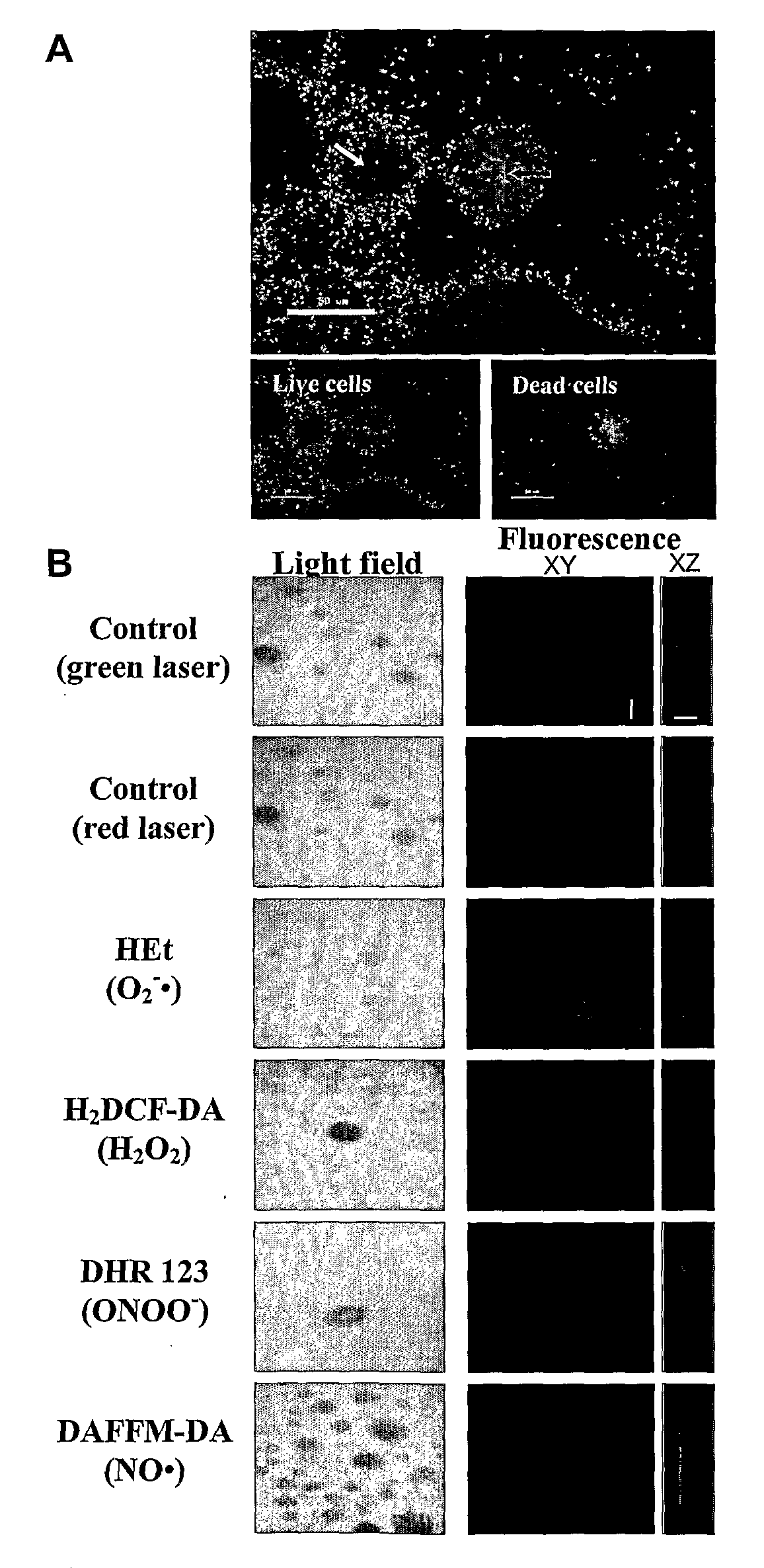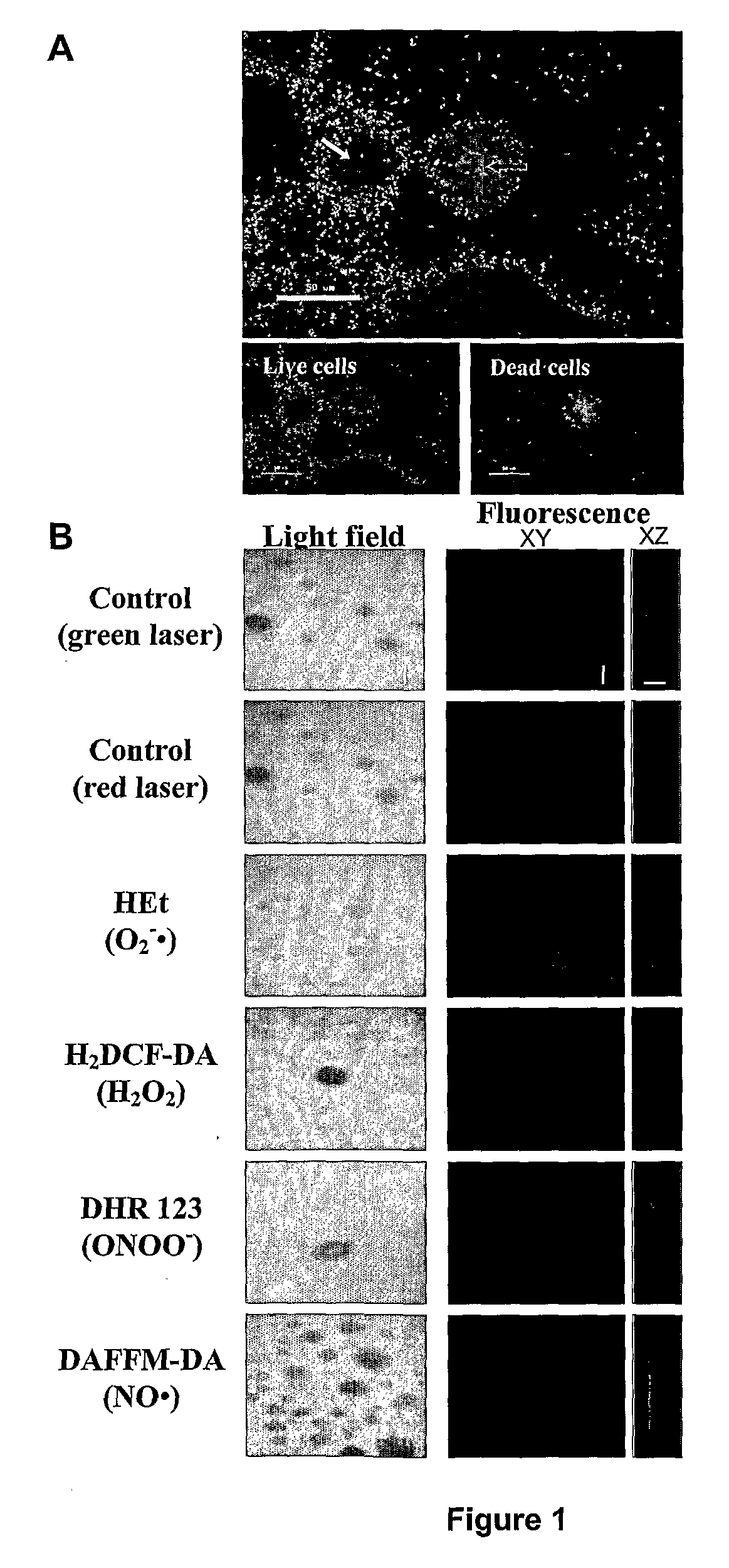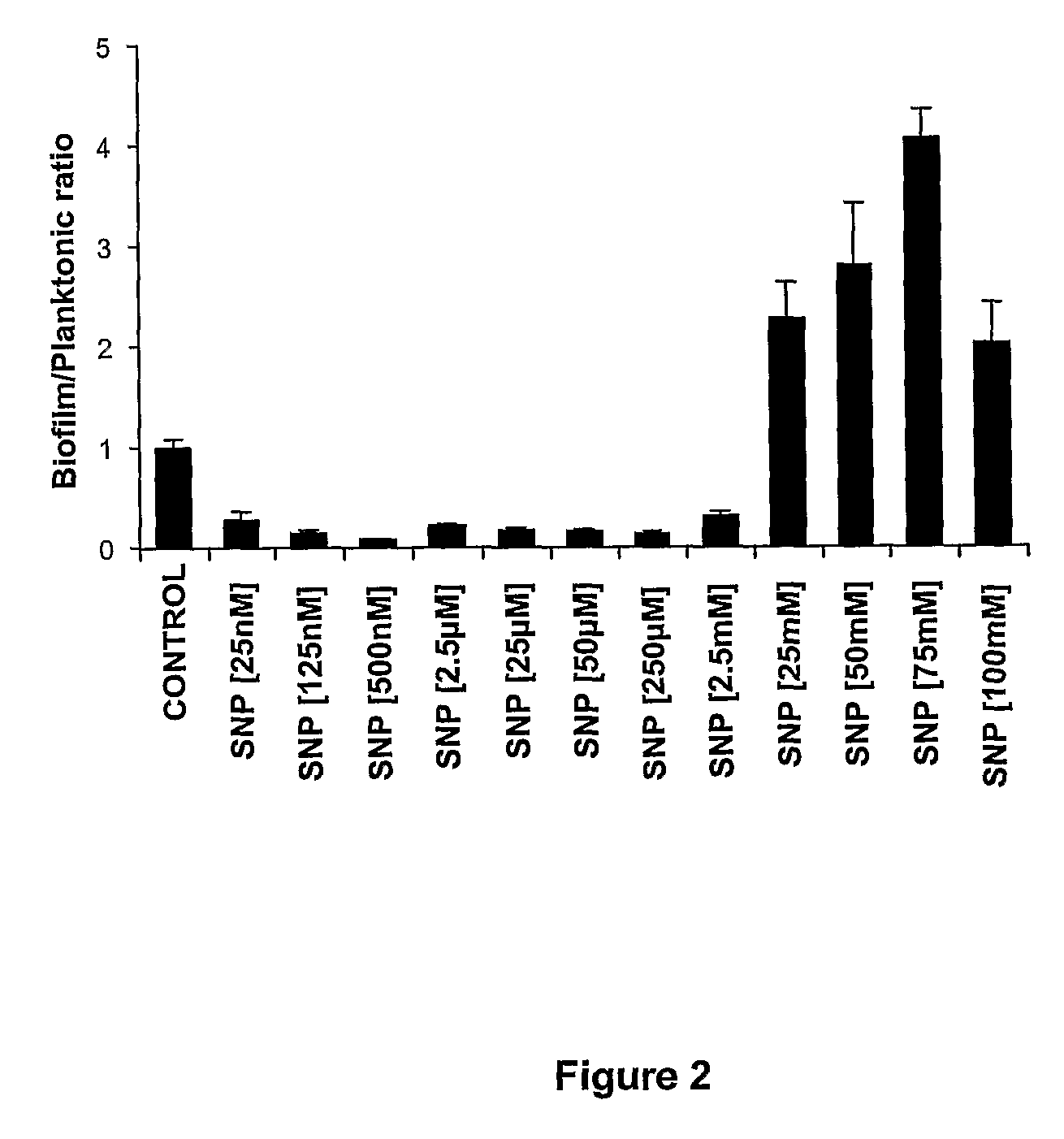Methods and Compositions for Regulating Biofilm Development
- Summary
- Abstract
- Description
- Claims
- Application Information
AI Technical Summary
Benefits of technology
Problems solved by technology
Method used
Image
Examples
example 1
Cell Death and Dispersal in Biofilms Correlate with the Accumulation of Peroxynitrite in Mature Microcolonies
[0113]P. aeruginosa PAO1 were grown in continuous culture flow cells (channel dimensions, 1×4×40 mm) at room temperature as previously described (Moller et al., 1998, In situ gene expression in mixed-culture biofilms: evidence of metabolic interactions between community members, Appl. Environ. Microbiol., 64: 721-732) for biofilm generation. Channels were inoculated with 0.5 mL of overnight cell cultures and incubated without flow for 1 hour at room temperature. Flow was then started with a mean flow velocity in the flow cells of 0.2 mm.s−1, corresponding to laminar flow with a Reynolds number of 0.02.
[0114]To investigate cell death during biofilm development, biofilms were stained with the LIVE / DEAD BacLight bacterial viability kit (Molecular Probes) in which SYTO9 is used to specifically stain live cells and propidium iodide is used to specifically stain dead cells. Stock s...
example 2
Biofilm Versus Planktonic Growth in P. Aeruginosa is Regulated by Nitric Oxide
[0118]Nitric oxide is a widespread intercellular and intracellular signalling molecule in biological systems. It is also the key precursor of peroxynitrite, a potent oxidant with a wide range of biological effects. Nitric oxide readily reacts with superoxide to yield peroxynitrite:
NO+O2−→ONOO—
[0119]The inventors therefore investigated the effect of the nitric oxide donor, sodium nitroprusside (SNP), on planktonic and biofilm growth of P. aeruginosa. SNP releases nitric oxide in vivo (Smith et al., 2001, Mechanisms of nitric oxide release from nitrovasodilators in aqueous solution: reaction of the nitroprusside ion ([Fe(CN)5NO]2—) with L-ascorbic acid, J Inorg Biochem, 87: 165-173).
[0120]Biofilms in 96-well plates were used for these experiments. 100 μL of 1 / 1000 overnight cultures of PAO1-GFP diluted in modified M9 medium were inoculated in 96-well plates (Sarstedt) and grown for 24 hours, at 37° C. with 1...
example 3
Exposure to Low Levels of Nitric Oxide Increases the Sensitivity of P. aeruginosa Cells to Antimicrobial Agents
[0125]Planktonic cells are known to be up to 1000 times more sensitive towards antibiotics than biofilm cells (Brooun et al., 2000, A dose-response study of antibiotic resistance in Pseudomonas aeruginosa biofilms, Antimicrob Agents Chemother, 44: 640-646; Davies, 2003, Understanding biofilm resistance to antibacterial agents, Nat Rev Drug Discov, 2: 114-122). One of the major difficulties in combating mature biofilms is this reduced sensitivity to antimicrobial agents. The results described above in Example 2 demonstrate that nitric oxide promotes the planktonic mode of growth over the more resistant biofilm phenotype. The inventors therefore investigated whether nitric oxide exposure may also restore antimicrobial sensitivity to biofilm cells. The effects of various antimicrobial agents on P. aeruginosa biofilms and planktonic cells that were exposed to low levels of nitr...
PUM
| Property | Measurement | Unit |
|---|---|---|
| Molar density | aaaaa | aaaaa |
| Molar density | aaaaa | aaaaa |
| Molar density | aaaaa | aaaaa |
Abstract
Description
Claims
Application Information
 Login to View More
Login to View More - R&D
- Intellectual Property
- Life Sciences
- Materials
- Tech Scout
- Unparalleled Data Quality
- Higher Quality Content
- 60% Fewer Hallucinations
Browse by: Latest US Patents, China's latest patents, Technical Efficacy Thesaurus, Application Domain, Technology Topic, Popular Technical Reports.
© 2025 PatSnap. All rights reserved.Legal|Privacy policy|Modern Slavery Act Transparency Statement|Sitemap|About US| Contact US: help@patsnap.com



